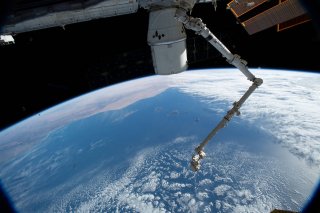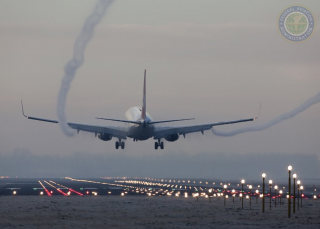Cosmic Radiation
- In the United States, a person gets about 5% of their annual radiation exposure from cosmic radiation.
- If you are higher in the atmosphere, you are closer to space, so you can receive more cosmic radiation.
Radiation from space is called cosmic radiation, which is constantly hitting the Earth. Our solar system’s Sun and other stars in the galaxy emit a constant stream of cosmic radiation. In the United States, a person gets about 5% of their annual radiation exposure from cosmic radiation.
About Cosmic Radiation
The Earth’s atmosphere and magnetic shield protect us from cosmic radiation. Earth’s magnetic shield protects us from the cosmic radiation and is strongest at the equator and weakest near the poles. The magnetic shield diverts most of the radiation around the earth. Earth’s atmosphere shields us from most of the remaining radiation that travels to Earth. Part of our exposure to cosmic radiation depends on the elevation where we live. People who live at higher elevations, like Denver, Colorado, are exposed to slightly more cosmic radiation than people who live at lower elevations, like Miami, Florida.
Source: National Aeronautics and Space Administration
Without shielding from the atmosphere, the space station and space vehicles have no natural protection from cosmic radiation. Special shielding is added to the space station and space capsules to protect astronauts from dangerous levels of cosmic radiation.
Solar Events
Solar events can raise radiation levels. Solar events include solar flares and coronal mass ejections, as well as other events. Solar flares are when sunspots interact with one another and cause an explosion on the Sun’s surface. Coronal mass ejections happen on the outermost layer of the Sun’s atmosphere, called the corona and occur when the corona throws off plasma and electromagnetic radiation. Learn more about Radiation From Solar Activity.
Flying in Airplanes
Source: Federal Aviation Administration (FAA)
Another factor in our exposure to cosmic radiation is the number and length of airline flights we take. When we fly in an airplane, we are closer to outer space. With less atmosphere to protect us, we are exposed to more cosmic radiation than when we are standing on the ground. The amount of cosmic radiation we receive during flights depends on many things. Two of the most important factors are altitude and length of the flight. If we take a one-way flight across the country (New York to Los Angeles), we likely receive 2-5 millirem (mrem), or 0.02-0.05 millisieverts (mSv), of radiation. The radiation from two cross-country flights is about equal to the radiation dose from a single chest x-ray. If you are curious about your estimated dose of radiation from ionizing radiation, please visit our Dose Calculator.
In the United States, the average dose of radiation people receive is 620 mrem (6.2 mSv) per year. Most people do not fly frequently enough to add a significant amount to their total radiation dose. However, airline crew members need to consider their flying time more carefully. The Federal Aviation Administration (FAA) tracks crew members’ exposure to cosmic radiation and uses a long-term calculation to estimate their total dose. During solar events, the FAA sends out a Solar Radiation Alert so pilots can fly at lower elevations to reduce exposure. The FAA also developed a computer software program that estimates radiation exposure from flights.
What You Can Do
- Learn more about cosmic radiation. Cosmic radiation is part of the natural radiation that we are exposed to all the time. Cosmic radiation makes up only a small portion of the radiation that we are exposed to every year.


